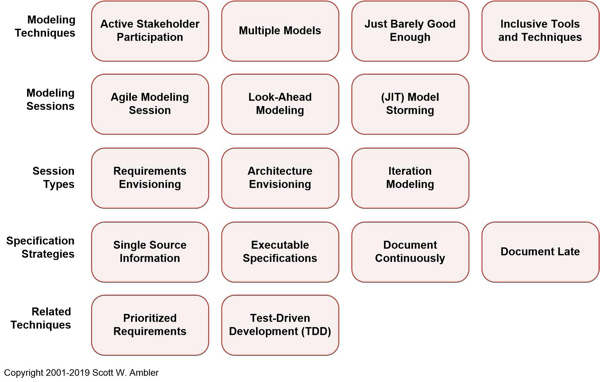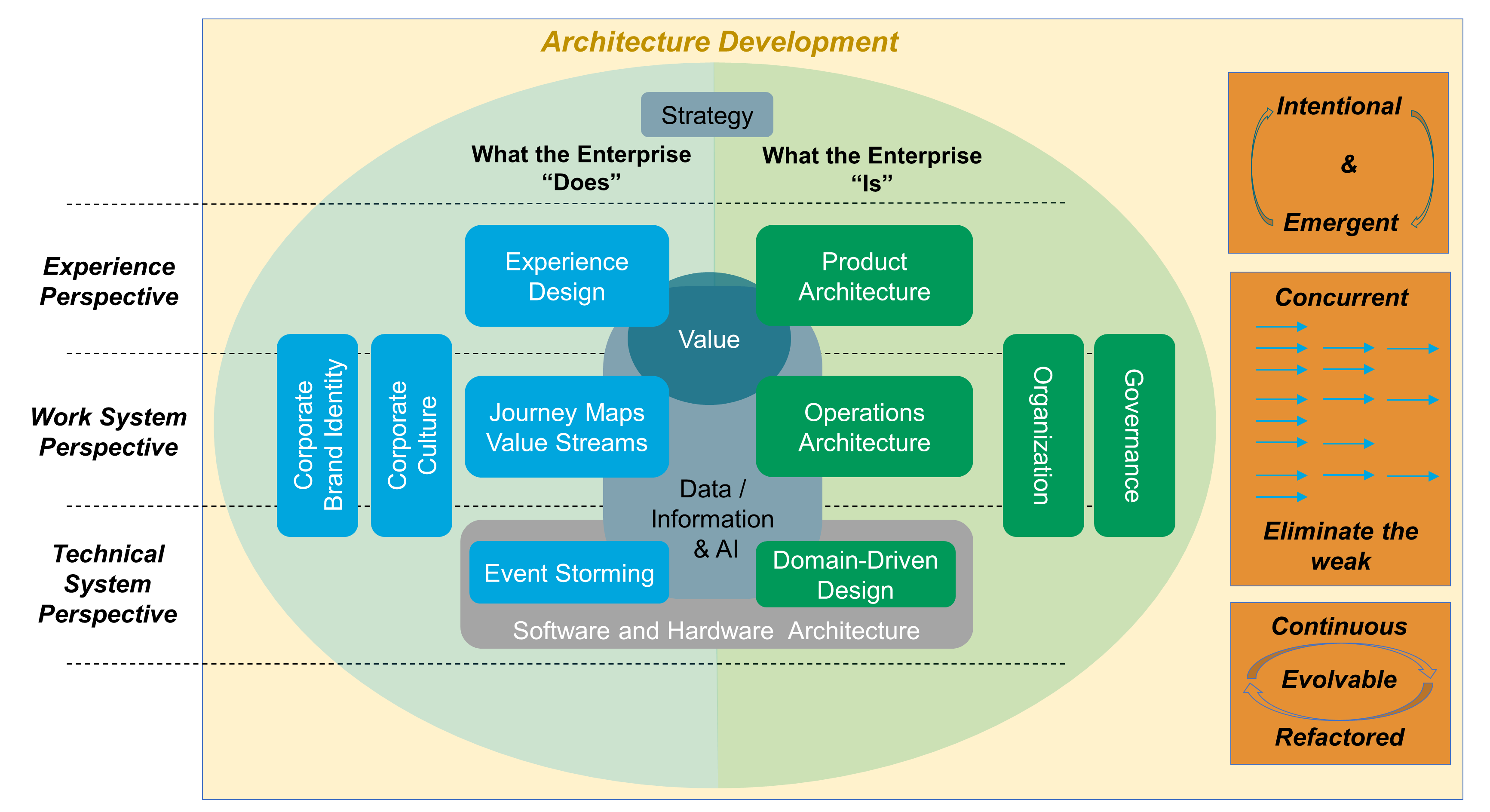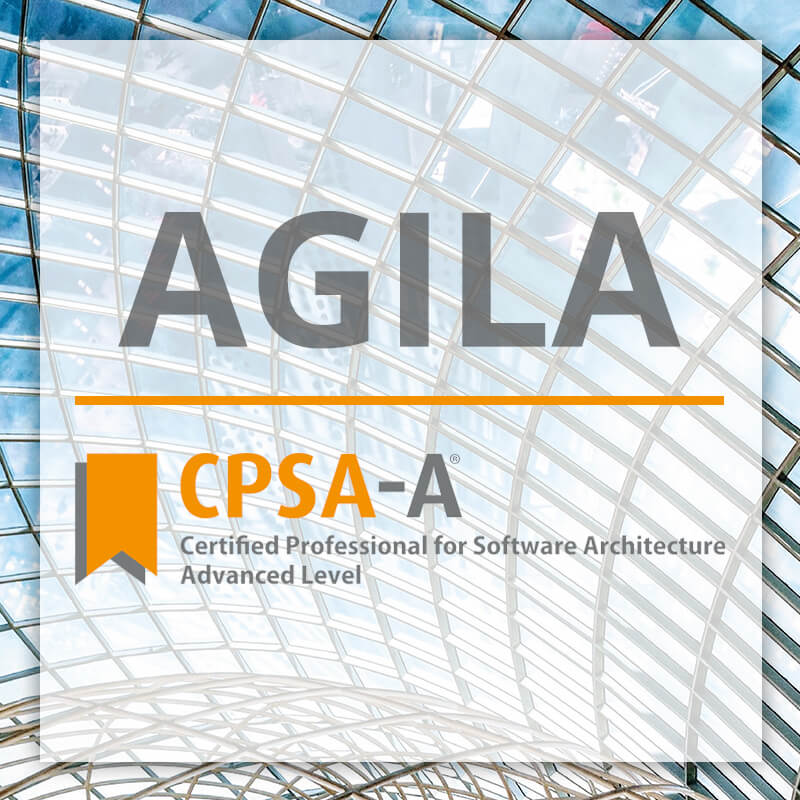
Agile Software Architecture is Mainstream

Slowly, slowly major actors in the software architecture landscape acknowledge agile development is state of the industry approach to building software products.
They are still struggling to integrate their older views in a faster, iterative, incremental development approach. The duration of a regular Scrum sprint is usually two weeks.
More important, they have discovered we build products because no customers buy projects. They buy solutions and products.
I am relieved I need less fight to convince enterprise architects that agile is the way. The big names Project Management Institute, Open Group, and iSAQB have at last an agile architecture offering.
If pushed, they acknowledge agile development is mainstream and used in the overwhelming majority of complex product development.
We have learnt it is difficult to concede and congratulate the winning party.
Look at the president of the United States of America Donald Trump to have a well-documented case of a loser trying all lies and tricks to avoid reality. Not long ago, the tobacco industry did the same as professional liars. And we still have climate change deniers.
We show mercy to all the software architecture and designer traditionalists who needed almost twenty years to acknowledge the supremacy of agile approaches.
Laggards, please bow and embrace modern software development approaches.
PMI and Disciplined Agile Delivery

PMI realized a few years ago, their standard approach to project management was losing ground in the software industry.
The first step was the PMI Agile Certified Practitioner certification to test what agile is. They never really integrated it with their other certifications.
The coup was their acquisition of Disciplined Agile Delivery in the second half of 2019. The DAD approach has been around since 2015 and had some success.
The framework has a complexity sympathetic to PMI. The roots of a lot of DaD concepts can be found in Rational Unified Process RUP. It is an Iterative and Incremental Development methodology. RUP is certainly not agile.
The founder of DAD Scott W. Ambler has a long history with the Unified Modeling Language and CMM.
Anyway, it is a huge step for PMI to move away from traditional heavy project development methods and embrace somehow agile product development.
Open Group and The Open Agile Architecture Initiative TOGAF

The open group has stewardship for the TOGAF enterprise architecture standard and training.
The open group has started to discuss the future of software architecture and agile approaches with a white paper second half of 2019. They published a first potential approach to agile software architecture the end of 2020.
The approach is quite rough. It is more a collection of ideas available in various approaches and ideas picked from the Internet. The fact they recognized the necessity to have an agile solution is encouraging.
|
The Open Group Architecture Framework TOGAF is the industrial standard for enterprise software and digital architecture. TOGAF provides techniques to model and analyze the various aspects such as enterprise architect, business architect, data architect, application architect, and technology architect. The Open Group has started to integrate agile paradigms into their approach. |

The open agile architecture shows they are at the very beginning of their journey.
They will have to compromise and find a way to integrate TOGAF ideas with agile concepts. I am not sure the result will be pretty.
The concepts and techniques defined in TOGAF are reasonable. The official process how to implement them is flawed. You cannot work with short iterations and incrementally improve your solution upon discovering new facts in a timely and efficient manner.
iSAQB Agile Software Architecture

The German software architecture bastion has finally fallen. iSAQB provides an advanced level module for agile software architecture. Their proposal of the module is described below.
-
The participants learn how to design, develop and further develop software systems and architectures in accordance with agile principles.
-
On one hand, the module covers the application of agile principles and concepts to architecture work. On the other hand, expedient anchoring of architecture practices in an agile approach.
-
The development of architectures in projects with self-sufficient teams or shared responsibilities demands new skills and capabilities on the part of developers and architects.
-
We cover technical as well as methodical and also communicative aspects, which are addressed here all theoretically and in practical exercises.
The above statements are quite shallow. I hope they will add more material in the future.
Agile Requirements Engineering
Interestingly, the requirement community is further on the path to agility. The most relevant organization is Europe is the International Requirements Engineering Board IREB. The organization offers two certifications with emphasis on agile approaches:
-
RE@Agile Primer to Bridge the gap between RE and Agile
-
Advanced Level RE@Agile is part of the advanced CPRE AL
Agile Testing Engineering
Interestingly, the quality insurance and testing community are further on the path to agility. The most relevant organization is Europe is the International Software Testing Qualifications Board ISTQB. The organization offers a whole set of certifications with emphasis on agile approaches:
-
Foundation Level Agile Tester
-
Advanced Level Agile Test Leadership at Scale
-
Advanced Level Agile Technical Tester
A nice bonus is that IREB and ISTQB work together to align their terminology and approaches.